A block oc mass 'm' is moving on a smooth horizational surface with speed v0 towards a vertical wall as shown. A massless spring of stiffness 'K' is attached to the wall such that the block compresses the spring as it moves closer to the wall. The natural length of the spring is Io (i) What is the speed of the block, as the speing has been c ompressed by a distance x? (ii) What is the macimum copression produced in the spring?
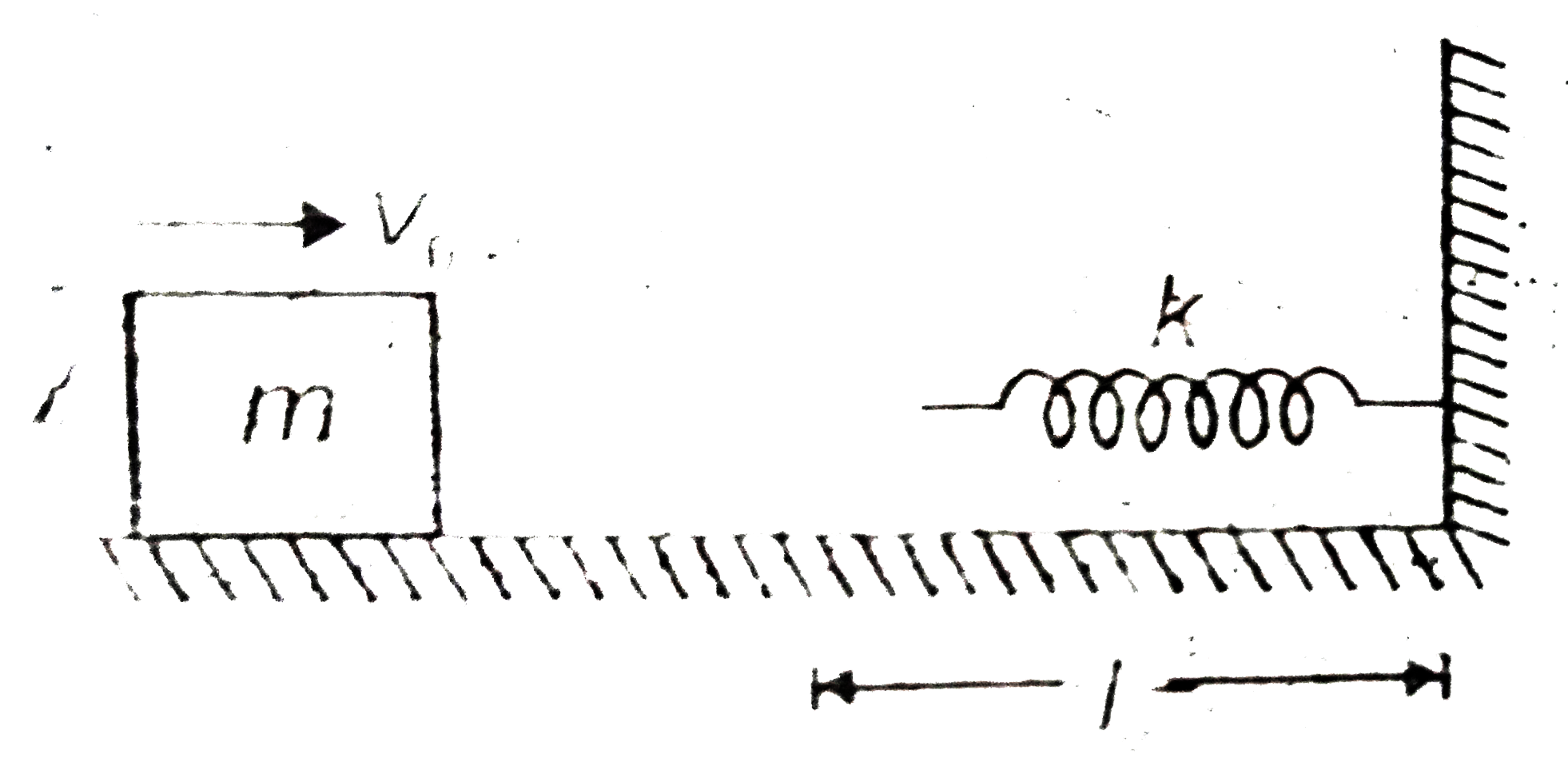
The various forces action on the block during its motion are (a) Weight, mg, downwards (b) Normal reaction N upwards (c ) Spring force, kx, leftward. The work done by the weight and normal reaction is zero
The work done by the speing force is Wsp=−x∫0kxdx
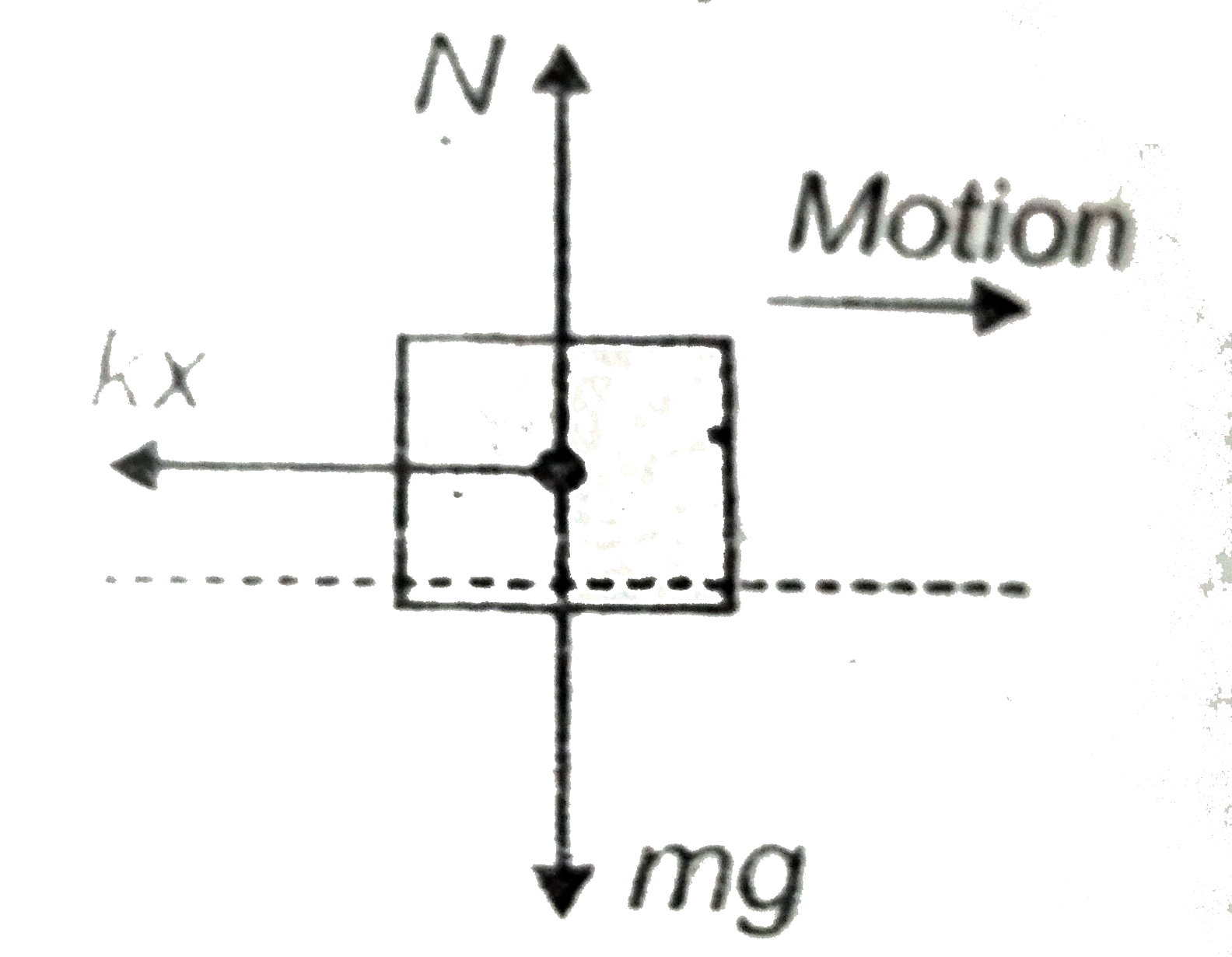
negative sign appears as block moves towards right, whereas force act feftward.
(i) By work-energy principle, W=Δk
⇒−x∫0kxdx=12mv21−12mv2
⇒mv21−mv22=−kx22
∴v1=√v2−kmx2
(ii) The compression in the spring increases till the block moves towards teh wall. At the instant speed of the block reduces to zero, the compression is maximum. After that, compression will start decresing again.
So when x=xmaxvf=0
⇒0=√v2−kmx2max
orxmax=√mv2k
Topper's Solved these Questions
- WORK, ENERGY AND POWERBOOK - AAKASH INSTITUTECHAPTER - WORK, ENERGY AND POWEREXERCISE - IILUSTRATION
2 Videos
- WORK, ENERGY AND POWERBOOK - AAKASH INSTITUTECHAPTER - WORK, ENERGY AND POWEREXERCISE - TRY YOURSELF
95 Videos
- WAVESBOOK - AAKASH INSTITUTECHAPTER - WAVESEXERCISE - ASSIGNMENT ( SECTION-D ( Assertion - Reason Type Questions ))
12 Videos
Similar Questions
A block of mass m is moving with an initial velocity v0 towards a stationary spring of stiffness k attached to the wall as shown in figure
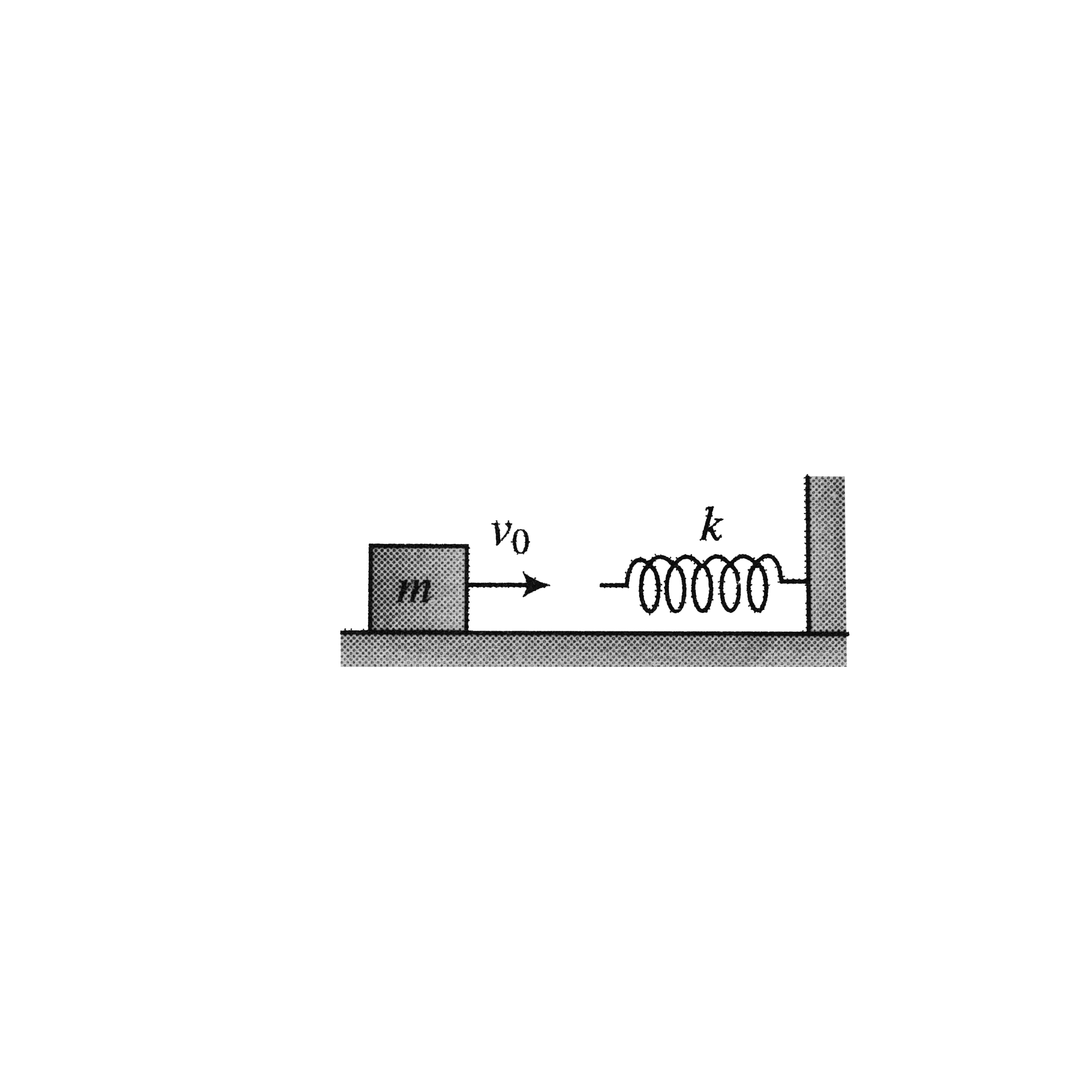
a. Find the maximum compression in the spring.
b. Is the work done by the spring negative or positive?
View SolutionA block of mass m moving at a speed v0 compresses a spring of spring constant k as shown in the figure. Find (a) the maximum compression of spring and (b) speed of the block when the spring is compressed to half of maximum compression.
View Solution
Knowledge Check
A block of mass m moving with velocity v0 on a smooth horizontal surface hits the spring of constant k as shown. Two maximum compression in spring is
 A√2mkv0B√mk.v0C√mk.v0Dm2k.v0
A√2mkv0B√mk.v0C√mk.v0Dm2k.v0A block is attached to a spring of stiffness k. The other end of the spring is attached to a fixed wall. The entire system lie on a horizontal surface and the spring is in natural state. The natural length of the springs is l0 if the block is slowly lifted up vertically to a height 512l0 from its initial position :
AThe work done by the lifting force =kl20288+512mgl0BThe work done by the spring force =kl20288CThe work done by the gravity =512mgl0DThe work done by lifting force =−512mgl0+kl20288A block of mass m moving with a velocity v0 collides with a stationary block of mass M to which a spring of stiffness k is attached, as shown in Fig. Choose the correct alternative(s)
 AThe velocity of the centre of mass is v0BThe initial kinetic energy of the system in the centre of mass frame is 14(mMM+m)v20CThe maximum compression in the spring is v0√(mMm+M1k)DWhen the spring is in the state of maximum compression, the kinetic energy in the centre of mass frame is zero
AThe velocity of the centre of mass is v0BThe initial kinetic energy of the system in the centre of mass frame is 14(mMM+m)v20CThe maximum compression in the spring is v0√(mMm+M1k)DWhen the spring is in the state of maximum compression, the kinetic energy in the centre of mass frame is zero
Figure shows a block of mass 'm' resting on a smooth horizontal surface. It is connected to a rigid wall by a massless spring of stiffness 'k'. The spring is in its natural length. A constant horizontal force F starts acting on the block towards right. Find (i) speed of the block as it moves throught a distance x, (ii) speed when the block is in equlibrium and (iii) maximum extension produced in the speing.

View SolutionA body of mass M is moving on a smooth surface with speed v0. Another body of same mass M attached to a spring is kept on the same surface as shown. The moving mas makes an impact with the spring of spring constant k and starts compressing it. What is the maximum compression in the spring ?

View SolutionA block of mass m is initially moving to the right on a horizontal frictionless surface at a speed v. It then compresses a spring of spring constant k. At the instant when the kinetic energy of the block is equal to the potential energy of the spring, the spring is compressed a distance of :
View SolutionA block of mass m moving with a velocity v0 on a smooth horizontal surface strikes and compresses a spring ofstiffuess k till mass coines to rest as shown in the figure. This phenomenon is observed by two observers :
(a) Standing on the horizontal surface
(b) standing on the block
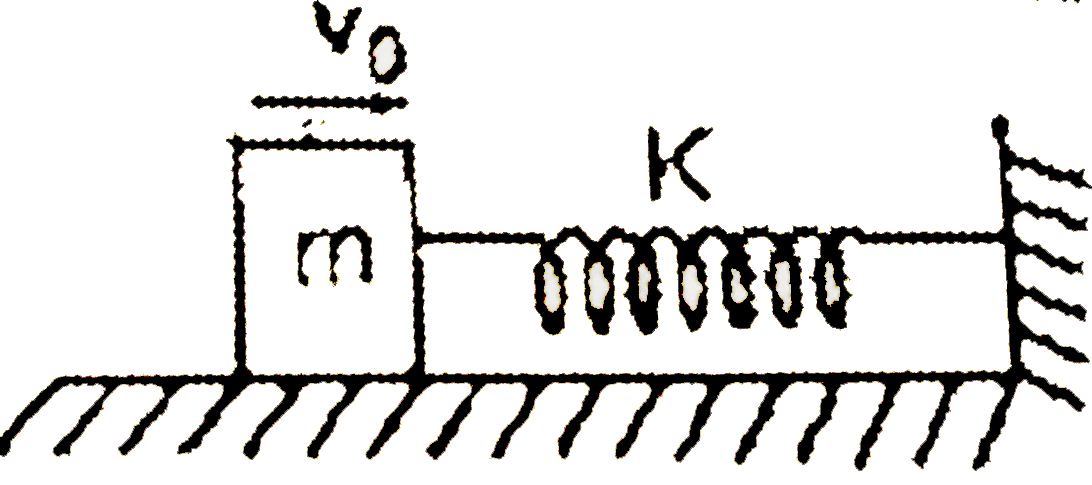
To an observer B, when the block is compressing the spring :
View SolutionOne end of a spring of force constant k is fixed to a vertical wall and the other to a blcok of mass m resting on a smooth horizontal surface. There is another wall at distance x0 from the block. The spring is then compressed by 2x0 and released. The time taken to strike the wall is
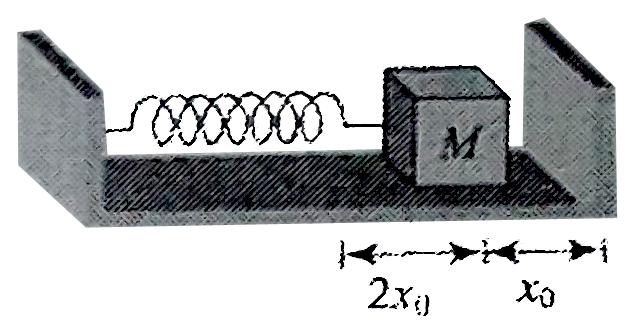
View Solution
